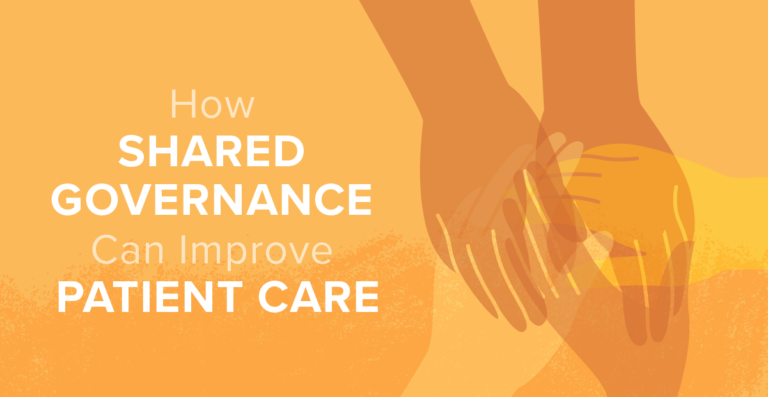The idea of shared governance has been around the nursing community since the mid-1970s. Over the last several decades, nurses have been struggling to implement a sustainable approach to shared governance, which would give nurses more authority and control over their profession. Creating a system of shared governance continues to be a challenge as nurses look for ways to insert their authority into the complex hierarchy of healthcare. Nurses are often made to serve at the whim of facility managers, administrators, and doctors. But nurses play a fundamental role in the healthcare system, caring for patients at every turn, and in order for the healthcare industry to move forward, nurses must play an active role in the decision-making process. Learn about the importance and challenges of implementing a system of shared governance for nurses.
Why Shared Governance Is So Essential to the Nursing Profession
Across the healthcare system, nurses typically spend more time with patients than any other type of employee. In terms of delivering care, nurses play an outsized role, caring for patients and attending to their needs on a constant basis. But, fully understanding the current state of the nursing profession and its needs can be challenging unless nurses have a way of voicing their concerns as a cohesive entity.
While organizations like the American Nurses Association exist to further the nursing profession, this does not have the same effect as creating a model of shared governance within a specific healthcare facility. Uniting as a single entity within a facility gives nurses more authority over their profession and their relationship to other departments and healthcare employees, laying the groundwork for more autonomy in the workplace and productive interdisciplinary collaboration.
The Challenges of Implementing Shared Governance
Changing the hierarchy of the healthcare system is no easy feat. Nurses are typically at the bottom of this power structure, unable to advocate for change in a meaningful way. In order to create a sustainable model of shared governance that unites nurses under a single governing body, nurses need to come up with a system of leadership that can work within the existing healthcare power structure. Finding a suitable leader can prove challenging, especially with nurses spread out across multiple departments and disciplines.
Once a leader has been chosen, this person would need to speak for the needs and concerns of all the nurses within the facility. Organizing and establishing such a model requires a great deal of communication, planning, and cooperation, which can be difficult if the facility is understaffed and underfunded with nurses working long hours day-in and day-out.
Doctors, facility managers, and administrators also need to make room for a coalition of nurses within the facility. In most facilities, those at the top are accustomed to using a top-down approach to facility management, leaving little to no room for nurses to advocate for their own profession. Facility managers will find it difficult to incorporate the needs of the nursing community into facility policy if nurses have yet to establish a coherent advocacy platform.
Shared Governance and the Future of Healthcare
As the healthcare industry continues to evolve, new technology is bound to disrupt traditional healthcare models as the industry looks for new ways to reduce costs and improve patient care. Nearly everyone in the industry agrees that healthcare needs to adapt quickly if it’s going to keep up with patient demand and changing healthcare policy. But transitioning to a new system and successfully implementing these changes means every department needs to have its voice heard. Nurses should be actively involved in the reshaping of the healthcare system going forward. If nurses are left on the sidelines, any changes made to the existing system may not address the needs of the nursing community, negatively affecting patient care.
Nursing departments can look at previous models of shared governance to further develop their authority in the healthcare system. Once a sustainable model has been formed, nurses can advocate for their profession and the needs of their patients to create a more efficient healthcare system.
